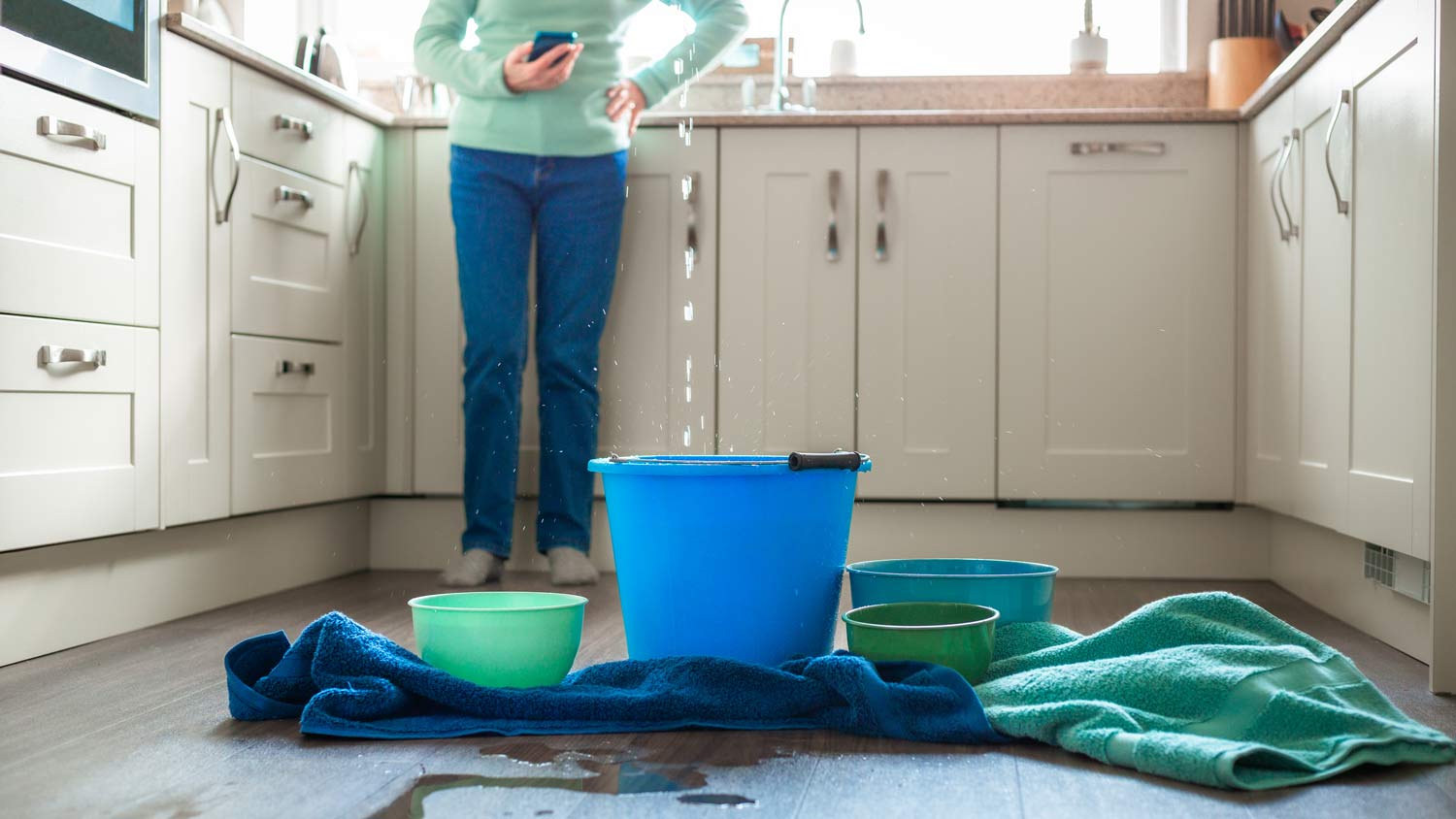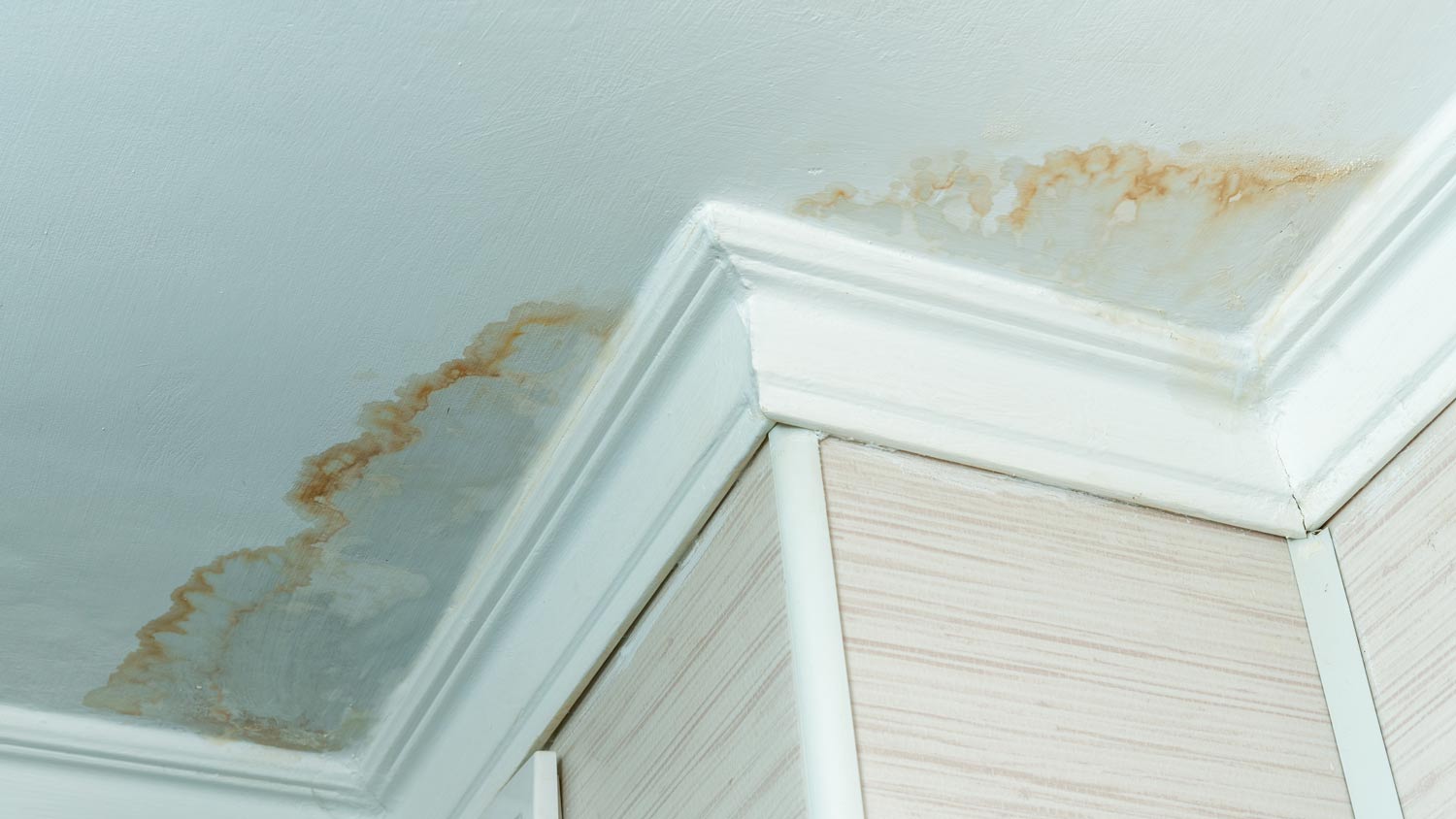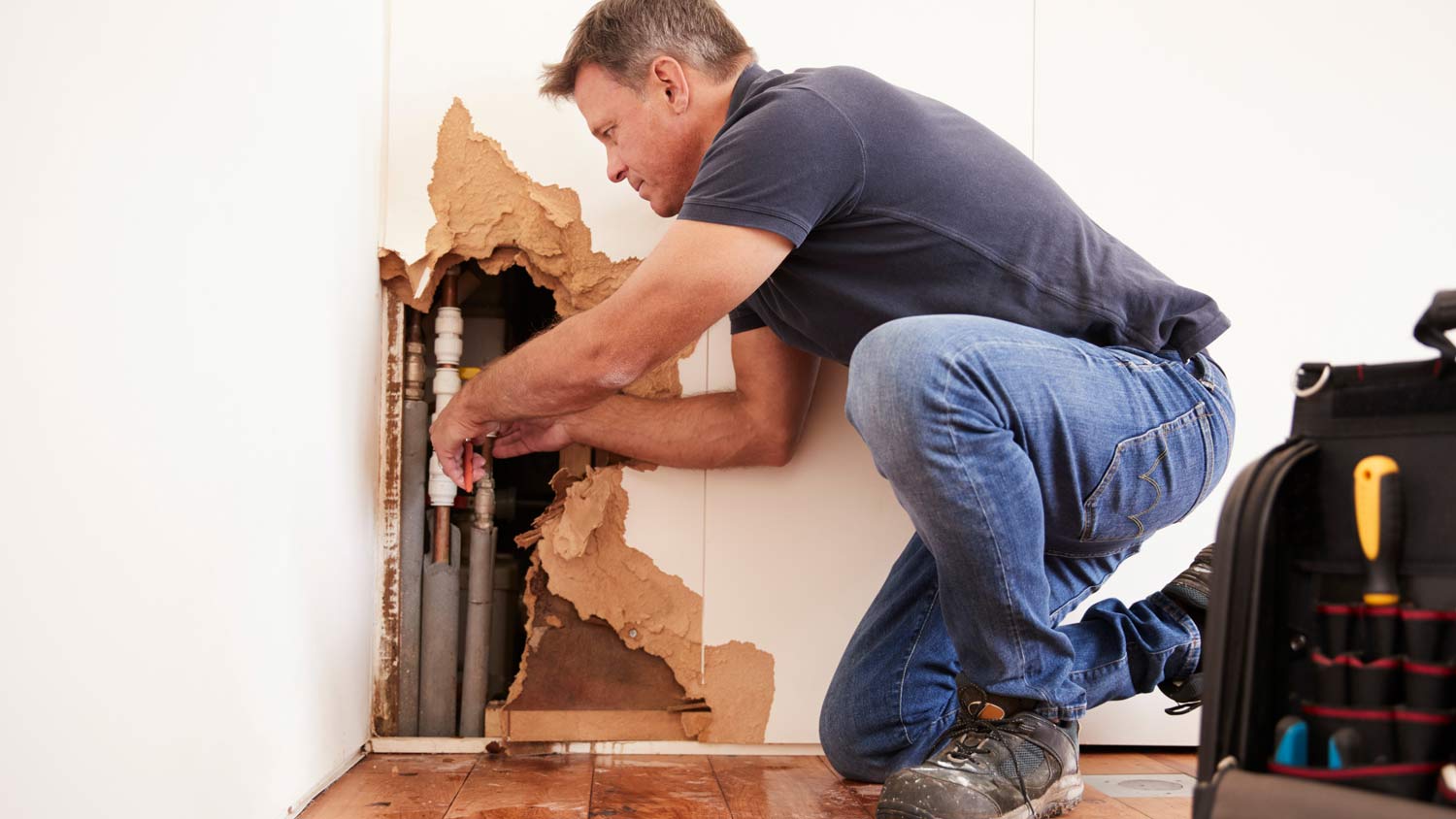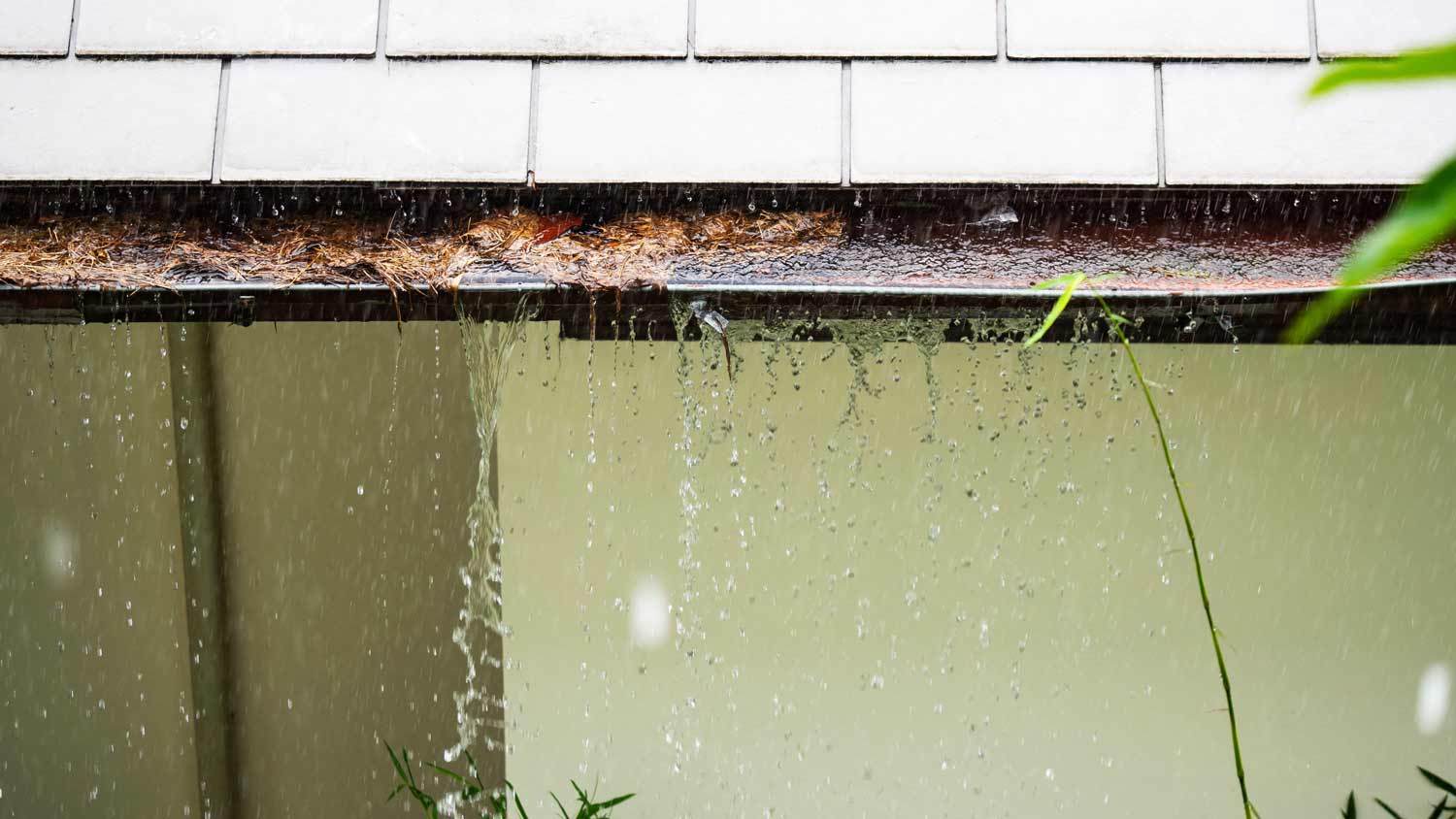6 Common Causes of Water Damage
Don’t drown in big repair bills


Water damage in your home can be caused by leaks, plumbing problems, and sewage backup.
Even minor water damage can lead to mold growth, structural damage, and ruined items.
Preventing and restoring water damage is important to keep your home and everyone in it safe.
Suddenly faced with flooded floors, sagging ceilings, or peeling paint? Water damage can cause all these issues and more—even small amounts of water can lead to big problems. We explore eight common causes of water damage, how to fix them, and how to keep them from happening in the first place.
1. Roof Leaks

Roof leaks are one of the most common causes of home water damage. Damaged roofing material, improper installation, or storm damage can all allow water to enter your home through the roof, first damaging your attic and then making its way into your ceilings and walls.
Water damage from roof leaks isn’t always immediately visible since it begins in one of the least-visited areas of your home. By the time you see evidence of a roof leak, the water damage can be quite serious.
How to Fix It
After your roof experiences any sort of damage, whether from extreme weather, falling debris, or wear and tear, repair it as soon as possible to prevent water from entering your home.
2. Bathroom Leaks
Bathrooms have extensive plumbing and use a lot of water, so it’s no surprise that bathroom fixtures may be responsible for water damage. Common bathroom leaks include leaky toilets, showers, and sinks, and damage may be visible—on the floor, under cabinets, or in the fixtures—or hidden behind the walls.
How to Fix It
If you notice a bathroom leak, shut off the water to the faulty fixture before the damage gets worse, then call a plumber to assess and repair the problem. Clean up any water and run fans to dry out the bathroom.
3. Leaking Pipes

Water pipes run throughout your home, and even a small leak can cause serious damage. Pipes can leak from age, wear and tear, freezing and bursting, or deteriorated connections. If the leaking pipe is in a visible area like a basement or garage, you may notice signs of the leak early enough to prevent damage. However, these leaks are often in the walls or above ceilings, so a leak can start causing damage long before you’re aware of it.
How to Fix It
Shut the water off at the main to prevent more water from passing through the leaking pipe. Call a pro to fix a water leak in the wall, ceiling, or basement—replacing damaged pipes isn’t a DIY project unless you have plumbing experience.
4. Appliance Leaks
Dishwashers, refrigerator water dispensers, water heaters, washing machines, and other appliances make our lives easier, but they can also cause water damage when they aren’t working right. Worn-out gaskets, seals, or water supply and drainage hoses can cause appliance leaks.
How to Fix It
First, turn off the water supply to the leaking appliance. Then, check all hoses, seals, and gaskets to identify the source of the leak and replace any faulty parts. If you can’t pinpoint where the leak is coming from, call an appliance repair pro to fix it.
5. Clogged Gutters and Drains

Your home’s exterior drainage system keeps water off your roof and away from the foundation, but if it’s not working properly, water can seep into your home and damage it. Clogged gutters can lead to roof leaks, damaged siding, and foundation leaks.
How to Fix It
Clean your gutters and downspouts to get the water moving again. Inspect your foundation, roof, and siding to identify where backed-up water has damaged your home, and call the necessary pros to repair the damage before it causes serious structural issues.
6. Sewage Backups
Sewage backups are one of the worst kinds of water damage to deal with—smelly, messy, and a health hazard. Backups can be caused by heavy rain, clogged drain lines, or even encroaching tree roots.
How to Fix It
Sewage backup should always be handled by the pros. Call a plumber who specializes in sewer line problems and a biohazard cleanup company to ensure your home is safe and sanitary.
Signs of Water Damage
Signs of water damage include:
Water stains on walls, ceilings, or flooring
Peeling or bubbling paint
Swollen or spongy drywall
A musty smell
An unidentified dripping sound
Warped, sagging, or swollen floors
When to Call a Pro
Water damage can pose serious health and property risks, so unless you’re certain you know the extent of the damage and the damage itself is minor, call a professional. A local water damage restoration pro can return your home to its original state after flooding or leaking. Water damage restoration costs an average of $3,800 but depends on how widespread the damage is and what materials need to be replaced or repaired. Hire a water damage restoration company that has experience dealing with the type of water damage you’ve experienced.
How to Prevent Water Damage
To prevent water damage and flood damage, take these steps:
Have your roof inspected annually
Regularly check your appliance’s supply and drain hoses and seals
Properly install a sump pump
Install a leak detection system for your plumbing
Insulate exposed pipes
Keep your gutters and downspouts clear
Install backwater valves for your sewer pipes
Frequently Asked Questions
Even a small leak or minor water puddling can cause water damage to your home. Water can seep into every part of your home, causing damage to your home’s structural elements and leading to mold growth. Damage severity depends on the amount of water, where the damage occurs, and how long the water remains.
It’s not a good idea to stay in a house with water damage. In addition to potential structural damage, flooding and water leaks can lead to mold growth, which is a serious health risk for everyone in your household. Wait for an expert to determine when your home is safe to return to after water damage occurs.








.jpg?impolicy=leadImage)






